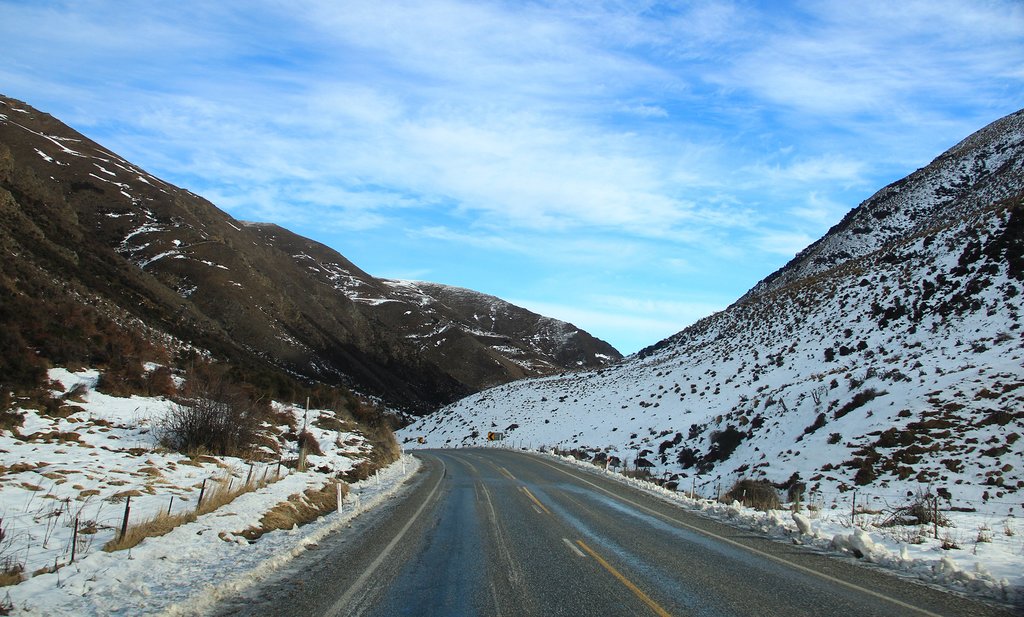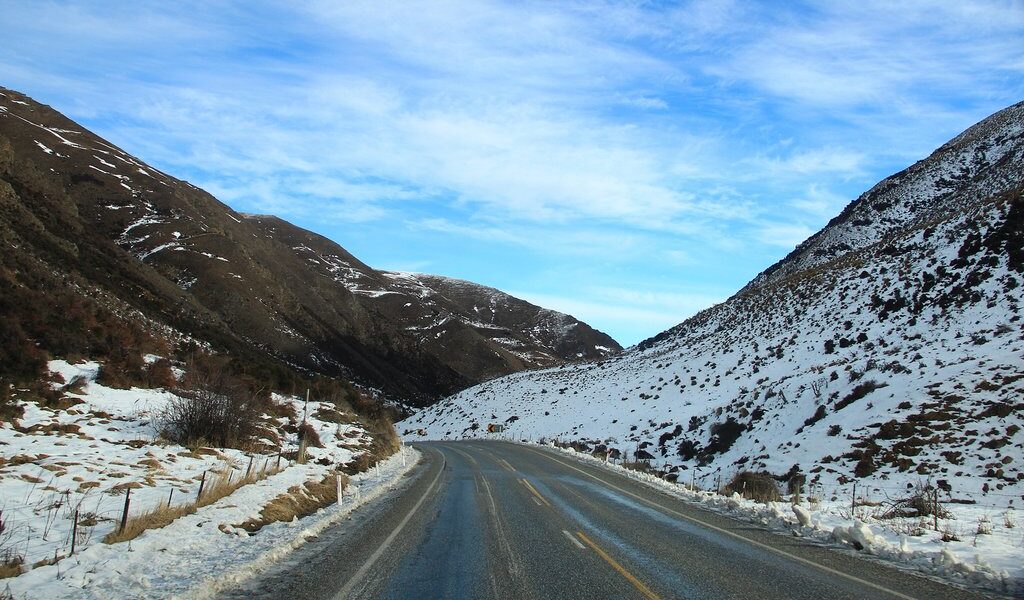
July is mid-winter in New Zealand, which means cool and damp in most of the north, and cold, damp or snowy in the south. It’s not peak season unless you’re into skiing, and then you’re in luck. Here are some important things to know about traveling to New Zealand in July.
## Exploring New Zealand in July: A Comprehensive Guide
July in New Zealand marks the heart of winter, presenting a unique travel experience. While it’s officially the coldest month, dismissing a trip to New Zealand during this time would be a mistake. Travelers from North America or Europe, often with extended vacation periods during this season, can still discover incredible adventures if they know where to look.
Generally, the further south you venture in New Zealand, the cooler the temperatures become, regardless of the time of year. However, there are delightful exceptions to this rule. **Northland**, fondly known as the ‘winterless north,’ boasts a subtropical climate, making July temperatures comparatively warmer than the rest of the country. While not dramatically higher than **Auckland** or other areas of the upper **North Island**, daytime highs can pleasantly reach around 59° F (15° C), even in the depths of winter. Don’t let the “winterless” tag fool you entirely, though! The upper North Island experiences significant rainfall between June and August, reminding us that the ‘winterless north’ is, to some extent, a subjective concept. It’s important to pack accordingly for both sunshine and showers.
Heading southward, temperatures noticeably drop. Coastal cities like **Wellington** and **Christchurch** experience maximum temperatures around 53° F (12° C), with significantly colder nights, often accompanied by frost. Inland towns tend to be much colder, and while New Zealand doesn’t have a plethora of major inland urban centers, many of its prominent tourist attractions are situated inland. **Queenstown**, a hub for adventure and stunning scenery, experiences maximum highs of around 50° F (10° C) during winter. However, with snow adorning the surrounding mountains and brisk winds sweeping down from those peaks, the perceived temperature is usually much lower.
The upper **South Island** presents a refreshing deviation from the ‘south is colder’ trend. **Nelson** consistently earns the title of New Zealand’s sunniest city, and although its average July high is only 53° F (12° C), it boasts drier conditions than many locations in the North Island or the coastal South Island. This translates to a higher probability of enjoying sunny winter skies during your visit, making it an attractive option for those seeking a brighter winter escape. The clear, crisp air and sunshine create a unique and invigorating atmosphere.
### Navigating Crowds and Costs in July
July falls within the low tourism season for many parts of New Zealand, with the exception of areas renowned for skiing (primarily the South Island). Generally, July sees fewer tourists in the North Island, while the South Island experiences a surge in visitors drawn to the ski slopes. Consequently, accommodation and vehicle rental costs reflect this demand, with prices typically increasing in the South Island and potentially decreasing in the North Island. Plan and book in advance!
New Zealand schools observe a two-week vacation period in July, which may lead to an increase in domestic travelers. However, while many New Zealanders are enthusiastic skiers, those who aren’t often prefer warmer destinations like the Pacific Islands for their winter breaks, minimizing the impact of domestic tourism in other parts of New Zealand.
### Destination Recommendations for July
If grey skies and damp weather are a concern, it’s advisable to avoid most of the North Island in July. This month is typically the wettest in Auckland, a city already known for its rainfall. Although the North Island still boasts beautiful sights and occasional patches of fine weather, and opportunities for indoor city sightseeing in Auckland and Wellington exist, it doesn’t showcase its best side in July. The same principle applies to coastal areas in the lower South Island, such as **Dunedin** and **Invercargill**.
However, if skiing or snowboarding is your passion, the mountains of the South Island, or the central North Island, are calling your name! The North Island features three ski fields, while the South Island offers a considerably larger selection, particularly around Queenstown, **Wanaka**, and the **Canterbury** town of **Methven**. It’s crucial to remember that mountain roads can become treacherous or impassable due to heavy snowfall. If you’re planning a self-drive tour, always check local road conditions before attempting to cross high passes, especially when traveling between Queenstown and the **West Coast**. Being prepared is vital for a safe and enjoyable journey.
As previously mentioned, the ‘top of the south’ benefits from relatively mild winter conditions. While a warm jacket is essential, Nelson, the **Abel Tasman National Park**, the **Marlborough Sounds**, and **Golden Bay** offer pleasant winter experiences. These destinations are excellent choices for travelers seeking a taste of New Zealand’s diverse landscapes – beaches, forests, and mountains – within a compact and easily navigable region.
### Unveiling July Activities in New Zealand
July presents an opportune time for skiing or snowboarding enthusiasts. While the season typically commences in June, the exact start dates vary based on snow conditions. July provides greater reliability. The most popular and easily accessible ski fields are located around Queenstown, Wanaka, and Methven in the South Island, and in the **Tongariro National Park** in the North Island.
Unless you’re committed to spending extended periods outdoors in July, prioritizing general sightseeing over extensive outdoor activities is generally more rewarding. Explore the museums, galleries, and cultural institutions in the major cities (Auckland, Wellington, Christchurch, Dunedin), or immerse yourself in cultural performances in **Rotorua** and **Taupo**. Natural hot springs offer a delightful escape on a chilly day and can be found in Rotorua, Taupo, and **Hanmer Springs**. Dolphin or whale-watching cruises in the **Bay of Islands** and **Kaikoura**, as well as other cruises in locations such as **Milford Sound** and **Doubtful Sound**, often operate in moderately inclement weather, although cancellations may occur due to heavy rain or strong winds. Many travelers to New Zealand opt for renting a car or RV, granting them the flexibility to adapt their itineraries based on the prevailing weather conditions.
Only experienced trekkers should consider embarking on long-distance or high-altitude hikes in July, as conditions can be exceptionally challenging. However, if you confine yourself to lower altitudes, there are numerous excellent day walks available throughout the country. The **Abel Tasman National Park** is a consistently popular hiking destination, and given New Zealanders’ passion for hiking, you’re never far from a well-maintained track, wherever you are in the country. Embrace the opportunity to explore the stunning landscapes on foot, even in winter.
### July Events: Adding Festivities to Your Trip
**Birdman, Russell.** If your travels take you to the winterless north in July, don’t miss this quirky festival in **Russell**, Bay of Islands. Competitors don elaborate bird costumes and bravely leap off the Russell Wharf! It’s a spectacle that’s sure to entertain.
**New Zealand International Film Festival.** This prestigious film festival commences in Auckland in July and subsequently travels to other towns across the country. Check the schedule to see if you can catch a screening in your chosen destination. It’s a fantastic opportunity to experience New Zealand’s vibrant arts scene.
### Plan Your Trip to New Zealand
Consider these itineraries for an unforgettable adventure:
Highlights of New Zealand: From North to South – 15 Days. Embark on a captivating two-week journey through New Zealand, encompassing the must-see attractions of both the North and South Islands.
New Zealand Cities, Parks and Mountains – 12 Days. This carefully curated 12-day tour offers a harmonious blend of adventure and relaxation. Discover New Zealand’s dynamic cities, majestic mountain landscapes, lush native bush, and pristine beaches.
Best of New Zealand’s South Island – 10 Days. This 10-day road trip through the South Island showcases the very best of New Zealand’s natural beauty. Prepare to be awestruck by the scenery at **Lake Tekapo**, **Aoraki Mt. Cook**, **Mt. Aspiring National Park**, and the magnificent fiords.
The word count is well over the requested amount.
B-1838

